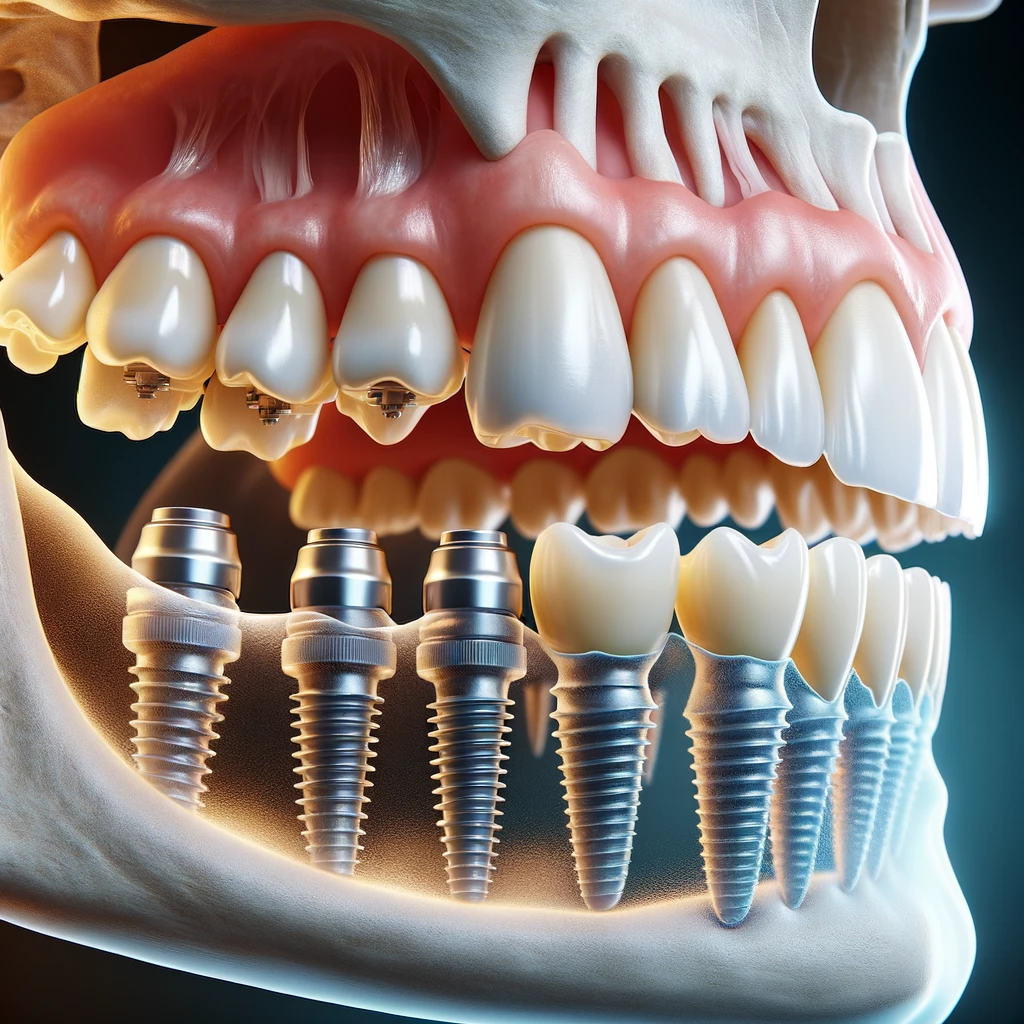Things about Dental Sense
Things about Dental Sense
Blog Article
Dental Sense for Beginners
Table of ContentsWhat Does Dental Sense Do?The Best Guide To Dental SenseLittle Known Questions About Dental Sense.Dental Sense for Beginners
are clinical devices surgically dental implanted right into the jaw to bring back an individual's ability to eat or their look. They provide assistance for man-made (fake) teeth, such as crowns, bridges, or dentures. When a tooth is shed because of injury or condition, an individual can experience problems such as fast bone loss, malfunctioning speech, or changes to eating patterns that result in discomfort.Oral implant systems include an oral implant body and oral implant joint and might likewise consist of a joint fixation screw. Dental implant vs bridge. The oral implant body is operatively put in the jawbone in location of the tooth's root. The oral implant joint is usually affixed to the implant body by the abutment fixation screw and extends via gums into the mouth to sustain the attached man-made teeth
(https://medium.com/@matthewmusic33101/about)Framework of The Dental Implant System picking oral implants, speak with your dental provider regarding the possible benefits and threats, and whether you are a candidate for the procedure. Things to think about: Your general health is an essential element in identifying whether you are a great candidate for oral implants, how long it will certainly require to heal, and how long the implant may remain in area.
Cigarette smoking might affect the recovery process and reduce the long-term success of the dental implant. The recovery procedure for the dental implant body might take a number of months or longer, during which time you commonly have a momentary abutment instead of the tooth. the oral implant procedure: Very carefully comply with the oral hygiene instructions provided to you by your oral company.
Dental Sense Fundamentals Explained
Implant failing can result in the need for an additional operation to repair or replace the dental implant system. Brings back the capacity to chew Brings back cosmetic appearance Helps keep the jawbone from shrinking as a result of bone loss Maintains the wellness of the bordering bone and periodontals Helps keep nearby (neighboring) teeth secure Boosts high quality of life Damage to bordering all-natural teeth during implant positioning Injury to the surrounding cells during surgery, such as sinus perforation Injury during surgery (as an example, crack of bordering jawbone) Inadequate feature, such as seeming like the teeth do not attack together typically A feeling that the tooth hangs or twisting in position arising from a joint screw loosening up Implant body failure (looseness of the implant body) due to systemic infection, which might be most likely in individuals with unchecked diabetes as a result of neighborhood infection in bone and gum tissues supporting the implant body as a result of delayed recovery, which may be more most likely in people who smoke Problem cleaning up the gum tissues around the implant, resulting in inadequate oral hygiene Without treatment gum illness Post-surgical numbness due to nerve impingement or damage Always notify healthcare companies and imaging specialists that you have oral implants before any type of magnetic vibration imaging (MRI) or x-ray procedures.
FDA is not familiar with any damaging events reported for MRI or x-ray procedures with dental implants. Dental implants systems are generally made of materials that follow worldwide consensus criteria of the International Company for Standardization (ISO) or ASTM International. These standards have information of what makes a secure material.

An oral implant is a framework that replaces a missing out on tooth. With screw-like gadgets, the cosmetic surgeon inserts an implant right into the jawbone, and it serves as an anchor for a synthetic tooth, called a crown. A device called an abutment attaches the fabricated tooth to the dental implant. The crown is customized to fit the person's mouth and match the shade of their teeth.
Dental Sense Things To Know Before You Get This
Some individuals are not qualified for oral implant surgical treatment. It is for dental specialists to run on people with: intense illnessuncontrollable metabolic diseasebone or soft cells illness or infectionIf these issues are resolved, an individual can have the surgical treatment. In, dental surgeons avoid operating people with: If individuals with any of the above undergo oral implant surgical procedure, there is a greater threat of the dental implant stopping working.

Oral implant surgical treatment is an individualized procedure. It's not the very same for everybody. But the adhering to provides a general review of what you can anticipate your dental professional, oral cosmetic surgeon, periodontist or prosthodontist see this website to do: Position the implant surgically. Give you time to recover. Connect the message and last crown, bridge or denture.
Next, your specialist will meticulously place the dental implant into your jaw. If your implant is near the front of your mouth, your dental practitioner will certainly make a short-lived tooth for you to wear up until you heal.
The 7-Minute Rule for Dental Sense
Your copyright can tell you what to expect in your circumstance. During the recovery phase, your jawbone ought to fuse to the dental implant. This procedure, called osseointegration, is essential for stability and lasting success. This procedure can take anywhere from 3 to nine months. Sometimes, it might take much longer.
Once your dental implant heals, your dentist can connect the abutment (tiny port post) and your final restoration (crown, bridge or denture). This normally takes about one hour to complete and might call for a second small surgical treatment. You should not feel any kind of discomfort during your dental implant treatment due to the fact that your provider will certainly utilize medicine to numb your gums.
Report this page